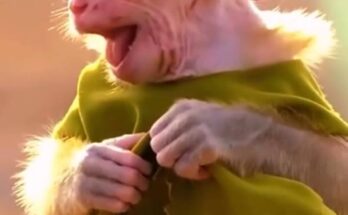
Friendship isn’t just for humans — it’s alive and well in the treetops, where monkeys live in tight-knit social groups filled with connection, loyalty, and affection. While their friendships may not look exactly like ours, primates form deep, meaningful relationships that offer emotional support, protection, and companionship.
Research has shown that many monkey species — such as baboons, macaques, capuchins, and chimpanzees — develop lasting social bonds, much like human friendships. These relationships are not only important for survival but also for emotional well-being. Monkeys with close social ties tend to live longer, experience less stress, and enjoy better chances of raising healthy offspring.
So how do monkeys show friendship?
One of the most common and powerful ways is grooming. Far beyond cleaning fur, grooming is a vital social activity. Friends will spend hours picking through each other’s hair, removing dirt or bugs while building trust and reinforcing their bond. Grooming helps reduce stress and is often used to comfort a friend after a conflict or frightening event.
Proximity is another clue. Monkeys often choose to sit, eat, or sleep near their closest companions. If a monkey is seen following another, touching them frequently, or staying close throughout the day, it’s likely that a strong friendship is at play.
Monkeys also share food, especially among close allies. In species like capuchins, individuals sometimes hand over a prized treat or allow a friend to join them at a food source. This generosity isn’t common with strangers but is more frequent among trusted companions.
Play is another strong sign of friendship, especially among young monkeys. Chase games, wrestling, and playful teasing help young monkeys learn social skills and deepen their bonds. Even adults engage in light-hearted play, often with their preferred social partners.
Friendships are also seen in how monkeys support one another. During conflicts or threats, allies will come to each other’s aid, sometimes risking their own safety. In many groups, high-ranking individuals form alliances with lower-ranking friends, offering them protection and support.
Even emotional support is observed. After a fight, a monkey might seek out a friend for comfort. These post-conflict moments often involve grooming, gentle contact, or just sitting quietly together — a powerful display of empathy and connection.
Just like in human society, friendships in the monkey world can shift. Some are lifelong, while others fade. But their ability to form bonds — based on trust, affection, and time spent together — reminds us just how emotionally intelligent and socially complex monkeys truly are.
Their friendships aren’t just survival strategies — they’re genuine relationships, full of meaning and emotion. When we look at monkeys and their friends, we’re reminded that the desire for connection is a deep, shared part of what it means to be alive


